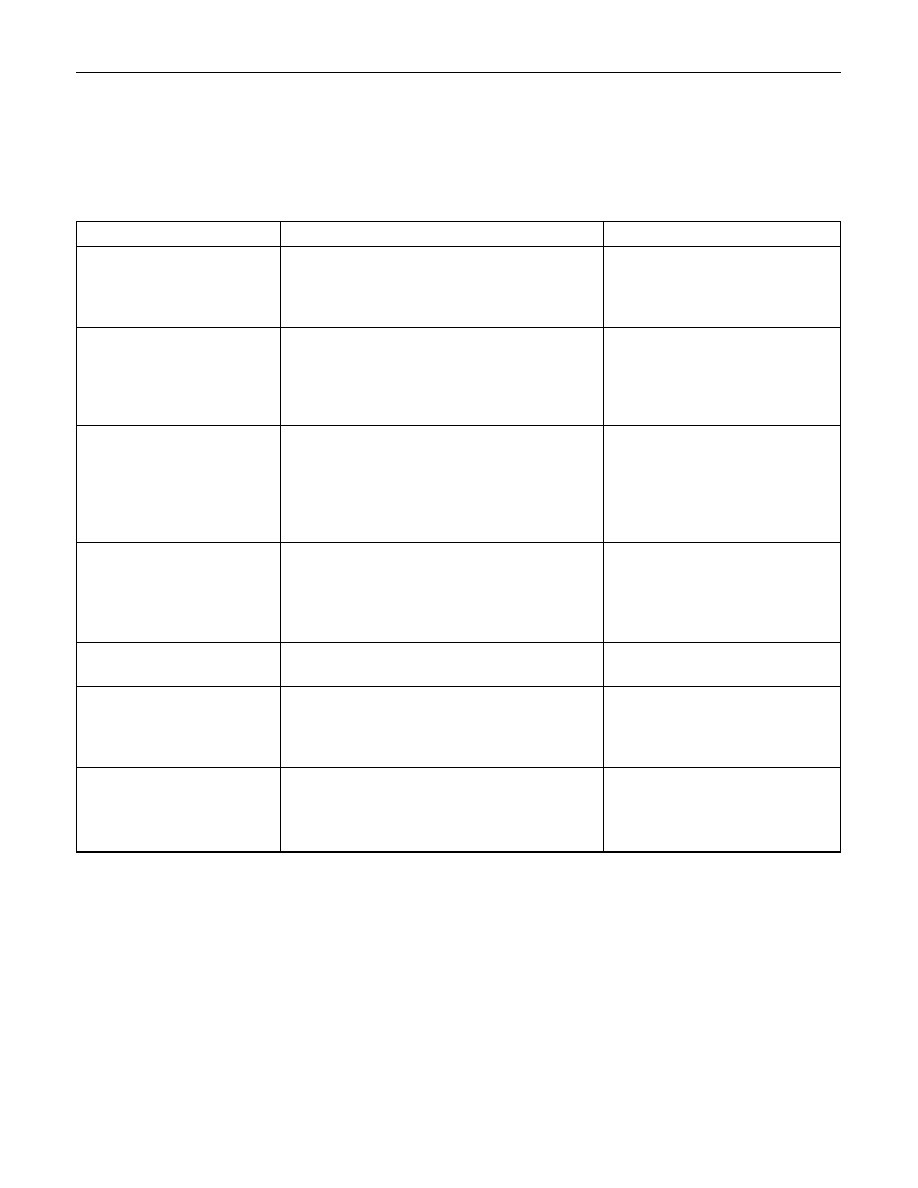Opel Frontera UBS. Manual - part 943

00 – 10 SERVICE INFORMATION
Problem
Possible Cause
Correction
STEERING COLUMN (CONT.)
TURN SIGNAL SWITCH
This troubleshooting covers mechanical problems only. See Section 8 for turn signal switch electrical
diagnosis.
Turn Signal Will Not Stay
in Turn Position
Turn Signal Will Not
Cancel
Turn Signal Difficult to
Operate
Turn Signal Will Not
Indicate Lane Change
Hezard Switch Cannot Be
Turned Off
No Turn Signal Lights
Front or Rear Turn Signal
Lights Not Flashing
1. Foreign material or loose parts
preventing movement of yoke.
2. Broken or missing detent or canceling
spring.
1. Loose switch mounting screws.
2. Switch or anchor bosses broken.
3. Broken, missing or out of position
detent, return or canceling spring.
4. Worn canceling cam.
1. Turn signal switch arm loose.
2. Yoke broken or distorted.
3. Loose or misplaced springs.
4. Foreign parts and/or material.
5. Loose turn signal switch mounting
screws.
1. Broken lane change pressure pad or
spring hanger.
2. Broken, missing or misplaced lane
change spring.
3. Base of wire damaged.
1. Foreign material between hazard
switch to turn signal switch body.
1. Electrical failure in chassis harness.
2. Inoperative turn signal flasher unit.
3. Loose chassis harness connector.
1. Burned-out damaged turn signal bulb.
2. High resistance connection to ground
at bulb socket.
3. Loose chassis harness connector.
Repair or replace signal switch.
Replace signal switch.
Tighten mounting screws.
Replace turn signal switch.
Replace turn signal switch.
Replace turn signal switch.
Tighten arm screw.
Replace turn signal switch.
Replace turn signal switch.
Repair turn signal switch.
Tighten mounting screws.
Replace turn signal switch.
Replace turn signal switch.
Replace turn signal switch.
Repair or replace hazard
switch.
Refer to Section 8 “Electrical
Troubleshooting”.
Replace flasher unit.
Repair loose connector.
Replace bulb.
Repair bulb socket.
Repair loose connector.